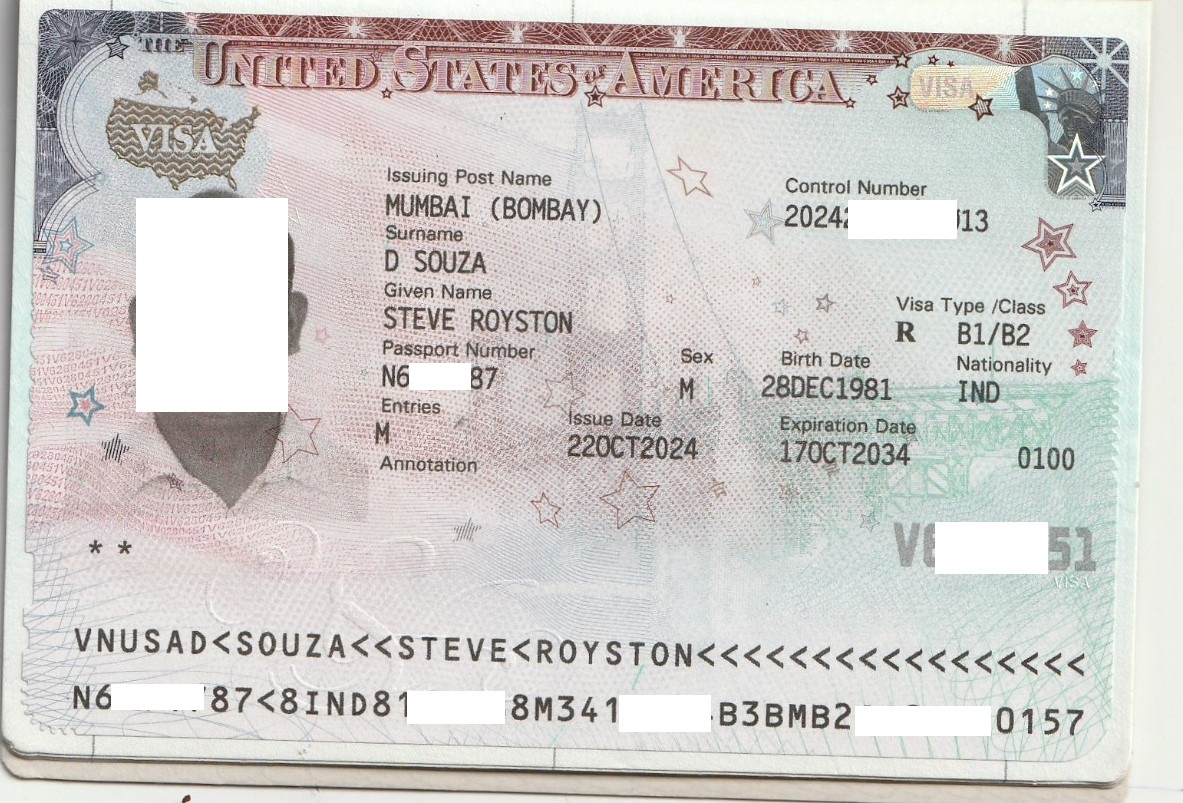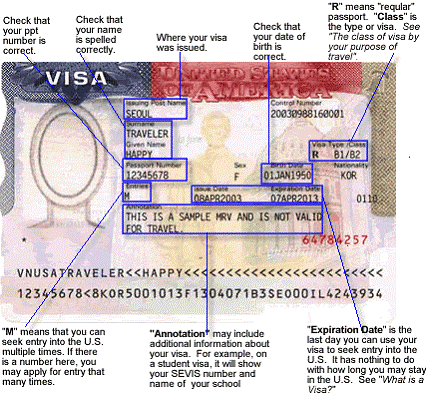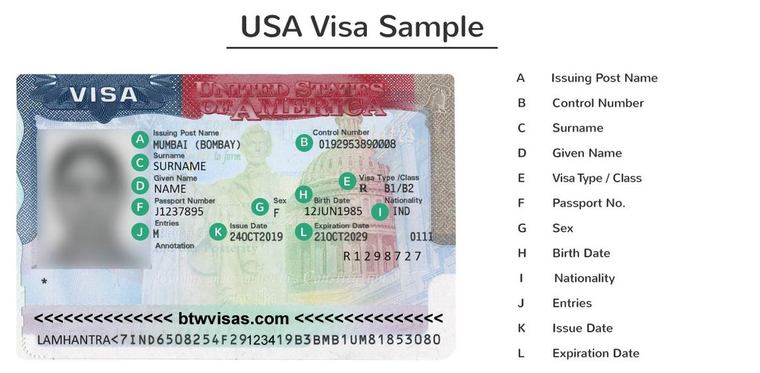Unlocking Opportunities: Important Information on United States Visas for Indian People
Maneuvering the complexities of U.S. visa choices is important for Indian people intending to discover chances in the USA. With different categories varying from short-lived visitor visas to pathways for permanent residency, comprehending the subtleties of each can significantly affect one's trip. This discussion will certainly highlight important details, consisting of application treatments and qualification requirements, that can encourage people in their pursuit of brand-new experiences. As we unbox these vital aspects, the inquiry develops: what strategies can one use to improve their opportunities of an effective application?
Overview of United States Visa Kind
When traversing the complicated landscape of US migration, understanding the different sorts of visas available is vital for Indian people seeking access right into the USA. The US immigration system is largely classified right into two broad categories: immigrant visas and non-immigrant visas.
Immigrant visas are designated for those meaning to live completely in the US - Types Of US Visas. These consist of family-sponsored and employment-based visas, where applicants generally require a sponsor. Non-immigrant visas, on the other hand, deal with individuals looking for short-lived residence, such as vacationers, business visitors, and those taking a trip for certain functions like work or research study
Within the non-immigrant group, numerous visa kinds exist, including B-1/ B-2 for service and tourism, H-1B for specialty occupations, L-1 for intra-company transferees, and O-1 for individuals with remarkable capabilities. Each visa has unique qualification needs and application processes, demanding extensive study to figure out the ideal category.
Understanding these categories is crucial for Indian citizens, as it enables them to navigate the application process a lot more properly, ensuring they pick the right visa type to fulfill their specific requirements and objectives.
Trainee Visa Options
For Indian residents desiring research in the United States, trainee visas present a vital path to pursue academic opportunities. The key visa classifications for students are the F-1 and M-1 visas.
The F-1 visa is assigned for academic trainees registered in a permanent program at a recognized establishment, such as colleges and universities. Types Of US Visas. This visa allows pupils to engage in on-campus employment and, under certain problems, take part in optional practical training (OPT) after completing their level, providing useful work experience in their field of research
Alternatively, the M-1 visa is planned for vocational or non-academic programs. It satisfies pupils going after technological or vocational training, allowing them to register in non-degree programs. M-1 visa holders may join sensible training, however it is typically much more minimal compared to the F-1 classification.
To get a pupil visa, candidates must secure admission to an U.S. institution, receive a Kind I-20, and show economic ability to sustain their education and learning and living expenditures. Understanding these visa choices is substantial for Indian citizens preparing to start their educational trip in the USA.
Job Visa Categories
Many Indian residents looking for job opportunity in the USA may consider different job visa categories tailored to various expert needs and credentials. One of the most noticeable job visa is the H-1B visa, developed for competent workers in specialized occupations calling for a college degree or its equal. It enables united state companies to momentarily utilize foreign employees, with a cap on the number of visas issued annually.
One more important category is the L-1 visa, which assists in the transfer of staff members within international firms. The L-1A visa is for supervisors and execs, while the L-1B visa is for staff members with specialized expertise.
The O-1 visa satisfies people with extraordinary capacities in their area, including scientific research, arts, or service. For farming or seasonal job, the H-2A and H-2B visas are readily available, permitting employers to employ foreign employees for temporary positions.
Family-Based Migration
Family-based migration supplies a path for united state residents and legal permanent homeowners to reunite with their family members from India. This immigration category is essential for keeping familial bonds and assisting in the combination of household participants into American society. U.S. How To Get US Visa From India. people can request for immediate loved ones, including partners, kids, and parents, without encountering yearly limits on visas. This expedited process considerably lowers waiting times for these close family members connections
In comparison, authorized irreversible homeowners might sponsor spouses and unmarried children, however they are subject to annual caps, causing much longer wait times. The family-sponsored migration system is separated right into 2 main groups: immediate family members and family preference groups. The former includes those that have a direct connection with an U.S. resident, while the latter includes more distant loved ones, such as siblings and wedded youngsters of people, and youngsters of legal permanent locals.
For Indian people looking for family-based immigration, recognizing the nuances of this system is essential. Correct paperwork and adherence to application protocols are vital for effective sponsorship. By maneuvering through these complexities, families can function towards reuniting and building their lives together in the United States.
Permanent Residency Process
The process of acquiring irreversible residency in the United States includes numerous key visa groups tailored for Indian people. Understanding the application actions, consisting of required documentation and qualification criteria, is important for an effective result. Additionally, possible candidates ought to be mindful of the expected timeline and specific demands connected with each category.
Visa Categories Overview
While going across the complexities of the U.S. immigration system, Indian residents looking for long-term residency must acquaint themselves with different visa categories customized to various scenarios. The primary path for long-term residency is with employment-based visas, which are categorized right into a number of preferences, consisting of EB-1 for people with extraordinary abilities, EB-2 for professionals holding sophisticated degrees, and EB-3 for knowledgeable employees. Each classification has certain eligibility needs and processing times.
Family-sponsored visas are an additional notable avenue, enabling U.S. citizens and legal irreversible citizens to petition for family members. This consists of instant loved ones, such as partners and children, and various other family categories, which might involve longer waiting durations.

Recognizing these visa groups is vital for Indian citizens, as they greatly influence the strategy for obtaining long-term residency in the USA. Each category's nuances and needs necessitate careful factor to consider to line up with individual circumstances and objectives.
Application Process Steps
Steering the application process for long-term residency in the United States entails several vital steps that need to be diligently complied with to ensure a successful result. The trip typically starts with figuring out the ideal immigration classification, such as employment-based or family-sponsored visas. Candidates have to collect vital paperwork, consisting of proof of qualification, financial statements, and personal recognition.
When the classification is recognized, the following action is to file the Kind I-130 (Application for Alien Relative) or Type I-140 (Immigrant Petition for Alien Employee), depending on the basis of the application. Complying with the authorization of the application, candidates will certainly require to complete the National Visa Center (NVC) handling by submitting the called for charges and kinds.
Next off, the applicant needs to undertake a medical checkup and get cops clearance certifications. Once these are finished, an interview will certainly be scheduled at the U.S. consular office or embassy. It is essential to prepare thoroughly for this meeting, as it can greatly affect the choice on the application. Upon approval, the candidate will certainly obtain their visa, giving them long-term residency in the United States.
Timeline and Requirements
Charting the timeline and demands for obtaining irreversible residency in the USA is vital for Indian residents looking for to establish a long-term existence. The process mainly hinges on employment-based or family-sponsored pathways, each with certain requirements and timelines.
For employment-based immigration, the procedure usually begins with a labor accreditation, which can take numerous months. When approved, the employer files a Kind I-140, Immigrant Application for Alien Employee, which can take an added six months to a year, depending on the handling. Complying with I-140 authorization, applicants may require to wait for their concern date to become present, which can differ considerably based upon the applicant's classification and nation of beginning.
For family-sponsored immigration, U.S. citizens can seek for immediate loved ones, which normally leads to faster handling. Other household categories may involve longer wait times due to yearly caps.
Application Treatments
Comprehending the application treatments for United States visas is essential for Indian residents looking for access into the United States. This section will certainly supply a review of different visa categories and describe the step-by-step process for applying. By following these standards, candidates can browse the complexities of the visa effectively.
Visa Categories Overview

Non-immigrant visas, such as B-1/ B-2 for company and tourist, F-1 for academic research study, and H-1B for specialized employment, allow temporary stays. Candidates have to show their intent to return to India after their go to.
On the other hand, immigrant visas, consisting of family-sponsored and employment-based groups, provide a path to irreversible residency. These visas commonly call for sponsorship from a relative or employer in the united state, along with a rigorous application process.
There are unique programs, such as the Diversity Visa Lotto, intended at advertising diversity among immigrants. Each visa group has specific eligibility requirements, called for documentation, and application treatments. Acquainting oneself with these groups is necessary for potential tourists and immigrants, as it establishes the foundation for a successful visa procedure. Comprehending these alternatives can greatly enhance the opportunities of attaining preferred end results in the U.S.
Step-by-Step Refine
Normally, the application procedure for U.S. visas includes a number of vital steps that applicants have to meticulously follow to ensure a smooth experience. The initial step is to identify the proper visa category based on the objective of travel, such as work, study, or tourist. As soon as the category is identified, applicants should finish the on-line DS-160 type, giving exact personal details and travel information.
After submitting the DS-160, applicants ought to pay the visa fee, which varies by visa kind. Next off, arrange a consultation for a visa meeting at the local united state Consular office or Consular Office. It is critical to prepare for the meeting by gathering called for records, including a legitimate copyright, visa verification, fee payment invoice, and any type of sustaining paperwork specific to the visa classification.
On the day of the meeting, get here promptly and dress properly - US Visas For Indian Citizens. During the interview, be prepared to address concerns regarding your traveling intentions, financial security, and connections to India. If accepted, the visa will certainly be marked in the ticket, permitting for traveling to the United States. Following these steps ensures a well-organized and reliable copyright process for Indian residents
Tips for a Successful Application
As you begin on the trip to secure a United States visa, it is vital to approach your application with meticulous interest to information and a clear understanding of the requirements. Begin by completely looking into the specific visa group that straightens with your purpose of travel, whether it be for work, research study, or tourist. Each visa type has distinct requirements and documentation requirements.
Make sure that all kinds are finished precisely and honestly. Tiny mistakes or noninclusions can cause hold-ups and even rejections. It is a good idea to gather all essential supporting documents, consisting of monetary declarations, employment letters, and proof of ties to India, which show your intent to return post-visit.
Prepare for your visa interview by practicing responses to typical questions associated with your travel plans and background. US Visas For Indian Citizens Confidence and clearness can greatly impact the police officer's perception. Ultimately, consider seeking help from trustworthy migration consultants if you feel overwhelmed.
Regularly Asked Concerns
What Are the Handling Times for United States Visa Applications?

Can I Adjustment My Visa Standing While in the US?
Yes, individuals can change their visa condition while in the United States, supplied they meet qualification needs and comply with proper treatments. It is important to submit the suitable application with united state Citizenship and Immigration Provider (USCIS)
Exist Age Limits for US Visa Candidates?
There are generally no certain age restrictions for U.S. visa applicants; nevertheless, specific visa categories might have age-related qualification requirements. It is essential to review the requirements for every visa kind to assure compliance.
What Are Typical Reasons copyright Rejection?
Usual factors copyright denial consist of insufficient economic sources, failing to demonstrate ties to the home country, insufficient application, absence of appropriate paperwork, previous migration violations, and failing to fulfill qualification criteria for the specific visa classification.
Exactly How Can I Appeal a Visa Denial Decision?
To appeal a visa rejection, evaluate the consular police officer's factors, gather supporting documents, and send a formal attract the suitable authority, making certain to abide by defined timelines and step-by-step requirements for the appeal procedure.